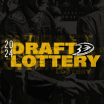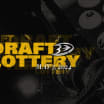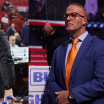It was nearly 50 years ago that history was made for NHL hockey in the Golden State, when the Los Angeles Kings faced off against the Oakland Seals in the quarterfinals of the Stanley Cup Playoffs. Back then the NHL's "West" Division consisted of just six teams, which along with the Kings and the Seals included the likes of the Pittsburgh Penguins, Philadelphia Flyers, Minnesota North Stars and St. Louis Blues.
The Kings made their way into that postseason despite a 24-42-10 record, and faced a matchup with the second-place Seals, a bout between two franchises both in their second seasons in the NHL. It marked the first time two California teams battled in the playoffs, with the Kings prevailing in seven games.
A half-century later, much has changed. The Kings captured two Stanley Cups (though they didn't get the first until their 44th year of existence), while the Oakland Seals were rebranded as the Bay Area Seals, then the California Golden Seals and ultimately relocated to Cleveland in 1976.
The Kings remained California's only NHL team until the early '90s, when the San Jose Sharks and Anaheim Ducks were born within two years of each other - ultimately launching an extraordinary growth of hockey in the Golden State that branched from the NHL all the way down to the game's youngest contributors.
Success of California NHL Teams Impacts Growth of Hockey in the State
The Ducks, Kings and Sharks are all once again in this year's Stanley Cup Playoffs, just part of the many ways hockey is flourishing in the Golden State
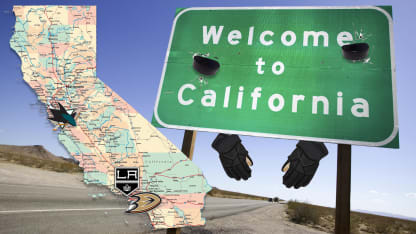
The Kings are responsible for one moment in the game's history that many credit for the birth of both the Sharks and Ducks. The blockbuster August 1988 trade that sent Wayne Gretzky from the Edmonton Oilers to the Kings not only had a monumental influence on both franchises and the NHL, but a massive impact on the growth of hockey in California.
"I've gotta be really honest. I didn't see this coming in 1988," Gretzky said in a CNN interview in 2014. "Over the years, the organizations between the Kings and the Ducks and the San Jose Sharks have really done a tremendous job of promoting and expanding the sport of hockey in the state of California."
While the Kings never won a Cup during Gretzky's time in LA (losing in the Stanley Cup Final in 1993), they did ultimately capture it in 2012 and 2014.
The Ducks were hatched partly out of the popularity of the three Mighty Ducks movies, the first of which was released in 1992. The then Disney-owned Mighty Ducks were born in December of that year and played their first game in October 1993.
Anaheim advanced to the Stanley Cup Final in 2003 in just its ninth year of existence, and in 2007 the Ducks captured California's first Cup. San Jose has yet to win hockey's holy grail but made its first Stanley Cup Final in 2016.
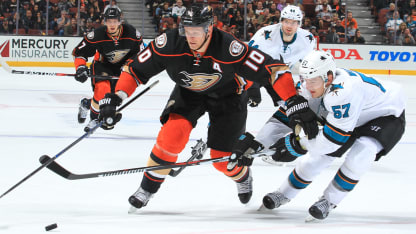
For nearly the last decade, the Stanley Cup Playoffs field has had some considerable California love, as this marks the fifth time in the last eight years that the Ducks, Kings and Sharks have all made the postseason. To compare, not once in the last 27 years have all three teams in Western Canada (Calgary, Edmonton and Vancouver) qualified for the playoffs in the same year. In one of those three-team California years - 2016 - not one of the seven Canada-based NHL teams made the postseason.
In each of the last eight seasons, the Western Conference Final had a California team in it, with the Ducks representing in two of the past three. This season it could happen again, unless the expansion Las Vegas Knights continue the remarkable run of their maiden season by winning two playoff series. They take on the Kings in the First Round of this postseason, while the Ducks face the Sharks for the second time in Stanley Cup Playoff history. The first time was in 2009, which marked the first all-California matchup since that pioneering Kings-Seals series 40 years prior.
Since then the Kings and Sharks have battled four times in the last seven postseasons alone, and in February 2015 played an outdoor game at the brand new Levi's Stadium in Santa Clara. It was the second NHL Stadium Series game played in California in as many years, with the first-ever outdoor NHL game in the state resulting in a 3-0 victory for the Ducks over the Kings at Dodger Stadium. Four months later the Kings would eliminate the Ducks in seven games in the Second Round of the playoffs, the first posteason series between the two SoCal rivals, and there is the potential for another if both prevail in the opening round that starts this week.
It's no coincidence the success of California's NHL teams has extended to a substantial growth of hockey in the state at every level. As of this season, 44 NHL players were born in California, with more than half of those coming into the league in the last 10 years. Among those was Long Beach native Emerson Etem, the winger taken by the Ducks in the first round of the 2010 NHL Draft (held for the first time in LA) who had two stints with Anaheim, along with the Rangers and Canucks.
Nic Kerdiles, who was raised in Irvine, was selected by the Ducks in the 2012 draft - the first Orange County-raised player taken by the franchise - and played his first game with the Ducks last season. "My neighbor played roller hockey and I thought, I'll try this out," Kerdiles says. "My mom's brother played some hockey, so she knew about hockey, but I never really knew anything about it. I ended up playing at a local rink for a year and a half, and eventually I tried ice hockey. I watched it on TV and loved the game, and I just wanted to keep advancing."
These days, Kerdiles is playing for Anaheim's minor league affiliate, the San Diego Gulls, one of the top teams in the American Hockey League's Pacific Division. The division was formed in 2015 and includes teams in Ontario (Kings affiliate), Stockton (Flames), Bakersfield (Oilers) and San Jose (Sharks).
Players like Kerdiles and Etem are hardly anomalies. Six players with California ties were taken in the 2017 NHL Draft, half of them from Orange County. Countless players in the area have honed their games as part of a Ducks program called
The Rinks
, which began in February 2009 with one ice rink and two inline facilities. Over the past six years the program has expanded to include eight locations under The Rinks brand (five ice and three inline).
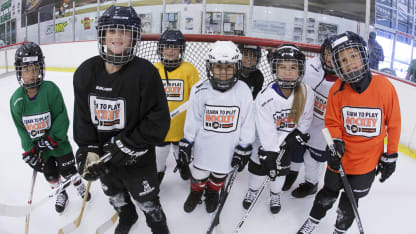
Art Trottier is Vice President of The Rinks program, which is part of the growth of hockey in the area that he could have never foreseen when he moved to California from Michigan 22 years ago. "It's been unbelievable," Trottier says. "When I got here, there was plenty of open ice. You'd walk into a building and nobody would be skating. Turn the clock ahead to 2018 and it's been this way awhile, it has really taken off."
Trottier points to the purchase of the Ducks by Henry and Susan Samueli in 2005 and their goal of growing the sport of hockey in Southern California as a major turning point. "There are so many things to do in Southern California, you really have to fight to keep these rinks open," Trottier says.
Over the years, he and Ducks CEO Michael Schulman approached rinks that were on the cusp of shutting down and revived them under The Rinks brand. "We went to certain rinks and said, 'If you're thinking about closing your building, please let us know before you do it,'" Trottier recalls. "That's how rinks like Corona and Lakewood and Yorba Linda came about."
And yet ice time remains at a premium because of the ever-growing cadre of youth and adult players in the region. That was the impetus behind the construction of a brand new four-sheet public ice skating structure in Irvine's Great Park funded by the Samuelis. Set to open in November, the 300,000-square-foot facility will also host public recreational skating, competitive and recreational figure skating, curling, broomball and additional community events.
One of the ice sheets will have seating for 2,500 spectators and serve as a host for many games in the burgeoning
Anaheim Ducks High School Hockey League
. Founded in 2007 with just one school, the league has grown to 49 varsity and junior varsity teams and has inspired similar leagues established by the Kings and Sharks over the past few years. The shining star of the ADHSHL is the Santa Margarita Eagles, who just won the USA Hockey Varsity High School Championship for the second time in the last five years and were finalists in 2015. In addition, seven local teams affiliated with the Ducks programs won California State Championships in 2015 with three additional teams winning the Southern California Amateur Hockey Association Championships.
"It's really taken off," Trottier says. "It's an expensive sport, and with the high school league and the sponsorship made available by Henry and Susan, we've made it affordable. Now it's cool to play for your high school team. Ten years ago that wasn't the case. We were losing all these kids going back east and playing for prep schools. We've kept kids around for three or four more years playing the sport here."
Some are staying even longer, as collegiate club hockey in Southern California has blossomed with teams at Chapman, Cal State Fullerton and Long Beach State. Further up the freeway are programs like USC, UCLA and Loyola Marymount.
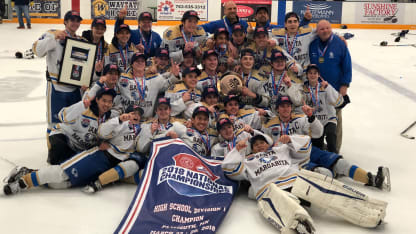
Many of the players thriving on the high school and college levels in the state are getting their starts at a much younger age. Youth hockey participation in Southern California has grown 40 percent over the last five years, according to USA Hockey. At the heart of it is the Ducks-funded Learn to Play program, which offers first-time hockey players between the ages of four and 12 the chance to pick up the game for free. The program began in Orange County in 2011 with 330 skaters and has grown to more than 10,000 participants over that time (including expansion into San Diego).
"We've made it very affordable for people to get into the sport," Trottier says, "to see if your kid actually likes it before you put money into it."
According to membership reports from USA Hockey for 2016-17, California saw the largest increase of 8-and-under players in its history, rising 25.2 percent to 3,553. In the last five seasons, participation in the California Amateur Hockey Association (CAHA) has grown by 1,520 (74.8%). California has 29,849 overall members of USA Hockey (including youth, coach & adult), seventh in the nation behind traditional hockey hotbeds like Minnesota, Michigan and New York state.
Meanwhile, girls participation in California has grown by an eye-opening 424% the last 10 seasons. The Lady Ducks program, which works with girls players as young as 4 with the goal of developing them into college players, is now the largest such program in the Western U.S. Among the program's notable alumni is defenseman Cayla Barnes, who won a gold medal at the 2018 Winter Olympics for Team USA.
The influence of the Ducks is just partly responsible for the sport's boom in California, something that will only further flourish as Anaheim, LA and San Jose continue to have an impact on the NHL's best time of year.
"It's been incredible," Trottier says, "It's really great when you see all three teams in the playoffs, and all of them are working to grow the sport."


